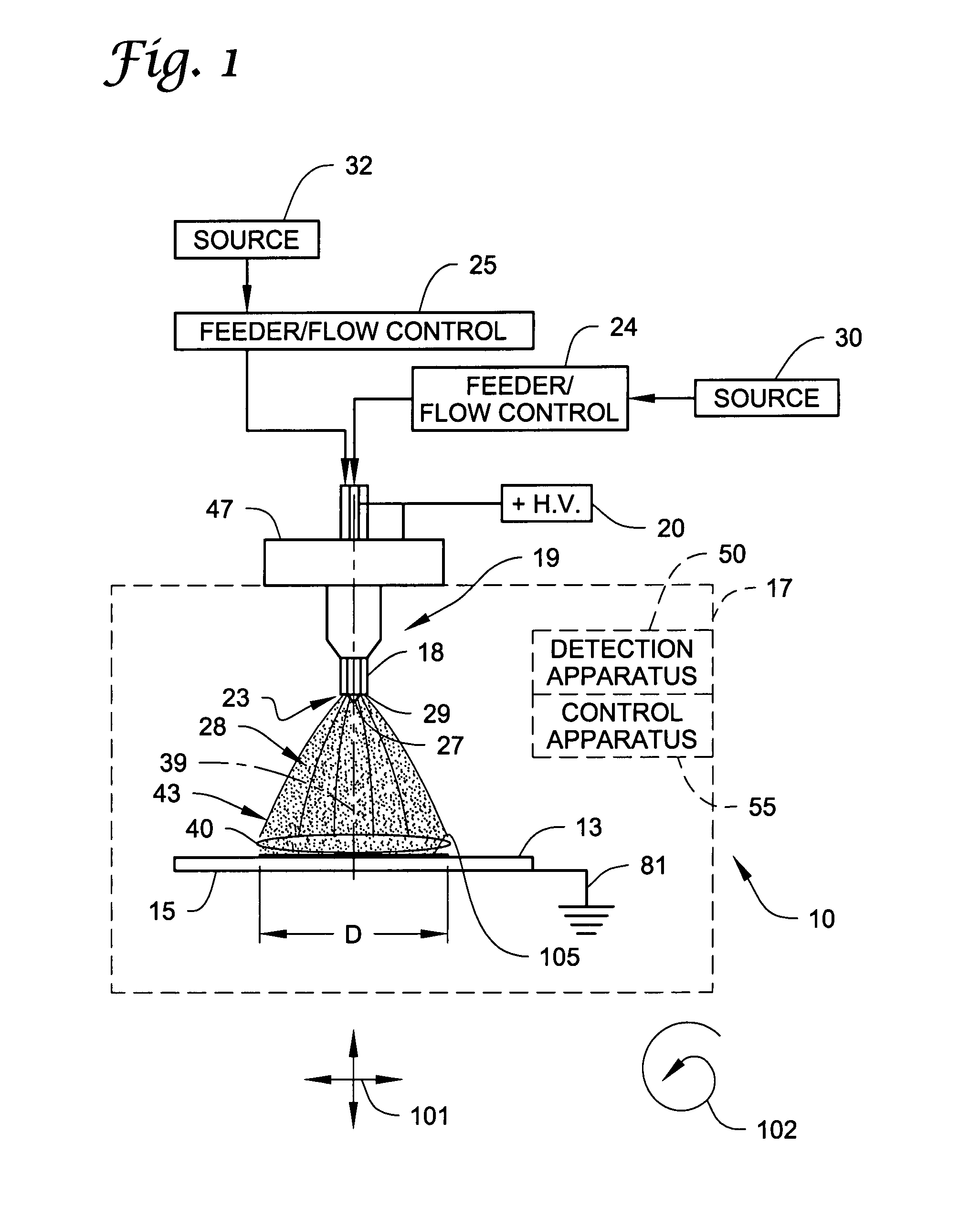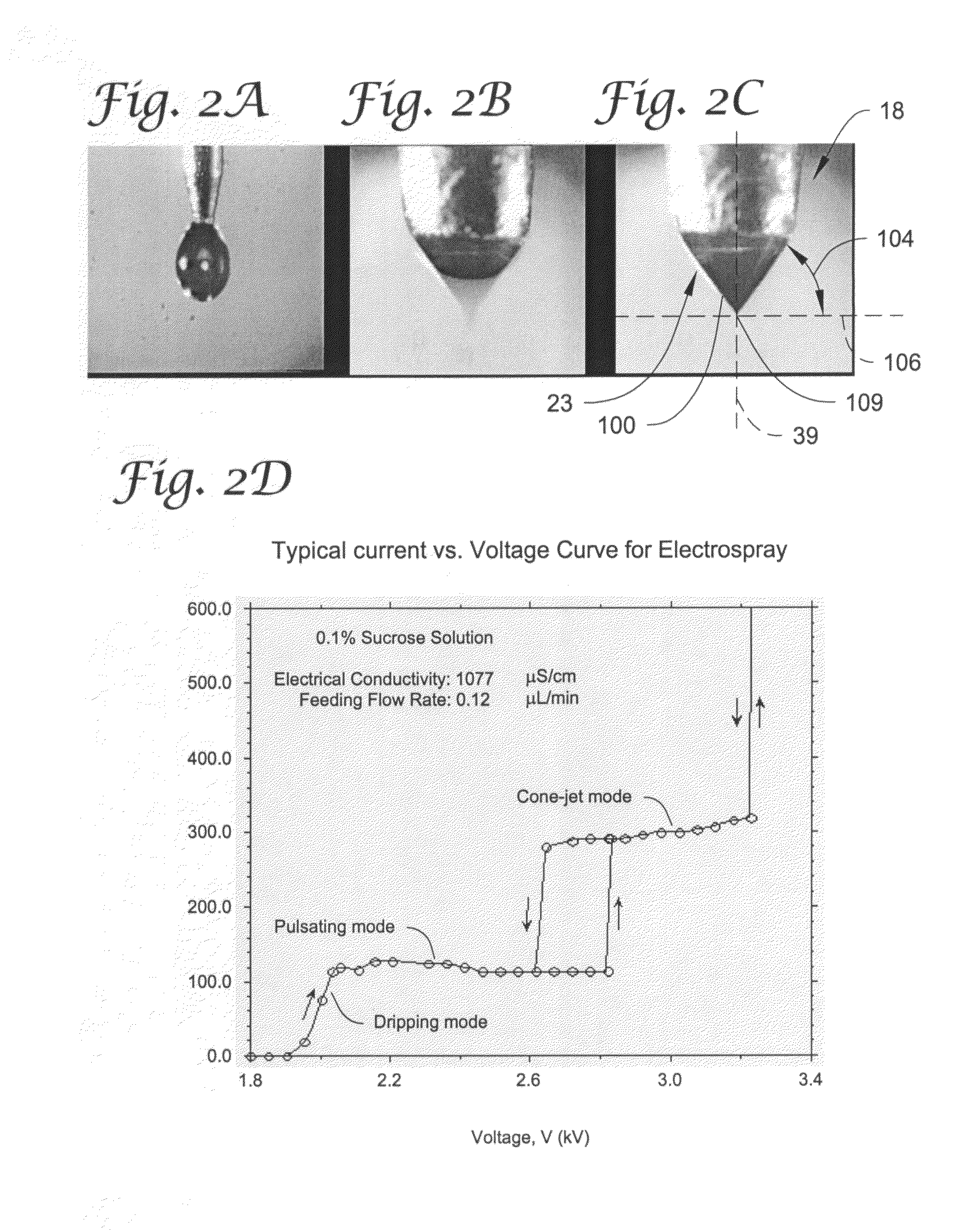Electrospray coating of objects
a technology of electrostatic spraying and objects, applied in the direction of electrostatic spraying apparatus, spray discharge apparatus, chemical/physical processes, etc., can solve the problems of avoiding the need for balloon delivery devices, difficult to describe each and every stent structure or related materials, and difficult to achieve uniform coatings. achieve the effect of stable cone-j
- Summary
- Abstract
- Description
- Claims
- Application Information
AI Technical Summary
Benefits of technology
Problems solved by technology
Method used
Image
Examples
examples setup
[0186]The examples to follow were carried out to produce nanocomposite coatings on surfaces with intricate architecture using an electrospray process that generates nanoparticles, initially focusing on coronary stents, and quantifying their physical characteristics. Further, the examples were carried out to achieve a level of reproducibility and performance of surface coatings. Yet further, the examples were carried out to:
[0187]1. Assess the relative importance of multiple coating process parameters on achieving the type of coating desired where outcome measures included coating weight, coating characteristics, and voltage required to maintain a stable conejet for each set of conditions including:[0188]a. Feed rate and composition of polymer, drug and solvent[0189]b. Polymer and drug concentration in sprayed material[0190]c. Conductivity of spray fluids[0191]d. Distance between spray tip and target
2. Using optimized process parameters, apply consistent coating weights to the surfac...
example 1
[0244]The solution samples listed in the table of FIG. 24A were sprayed under the conditions provided therein. FIG. 24B shows images of the coatings resulting from the spraying of the samples in cone-jet mode. The images for each solution are provided in higher and lesser magnification. The solution (0.9% poly(styrene-b-isobutylene-b-styrene (abbreviated SIBS)+0.1% paclitaxel (PTx) in 85% tetrahydrofuran (THF) and 14% methanol (MEOH) could be sprayed as open matrix coating. In order to obtain a closed film (smoother) coating, toluene was added into the mixture.
example 2
[0245]The solution samples listed in the table of FIG. 25A were sprayed under the conditions provided therein. FIG. 25B shows images of the coatings resulting from the spraying of the samples in cone-jet mode. The images for each solution are provided in higher and lesser magnification. The solution (0.9% SIBS+0.1% PTx in 99% THF) didn't spray in cone-jet mode initially because of the low conductivity. More volatile and conductive solvent such as methanol was used in outer nozzle so that the open-matrix coating was achieved. Then, the closed film coating was obtained by adding the outer flow and changing the ratio between the inner and outer flow.
PUM
| Property | Measurement | Unit |
|---|---|---|
| diameter | aaaaa | aaaaa |
| conductivity | aaaaa | aaaaa |
| temperature | aaaaa | aaaaa |
Abstract
Description
Claims
Application Information
 Login to View More
Login to View More - R&D
- Intellectual Property
- Life Sciences
- Materials
- Tech Scout
- Unparalleled Data Quality
- Higher Quality Content
- 60% Fewer Hallucinations
Browse by: Latest US Patents, China's latest patents, Technical Efficacy Thesaurus, Application Domain, Technology Topic, Popular Technical Reports.
© 2025 PatSnap. All rights reserved.Legal|Privacy policy|Modern Slavery Act Transparency Statement|Sitemap|About US| Contact US: help@patsnap.com



